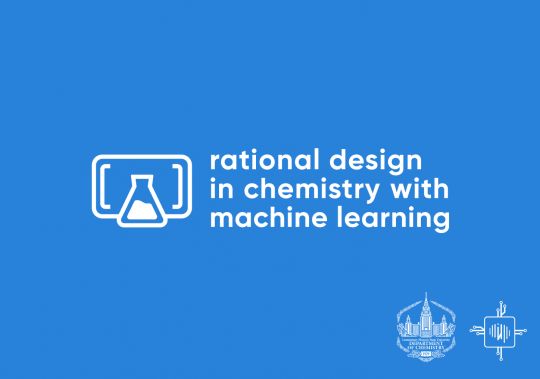Курс призван отразить современную химию на языке, доступном специалистам из других областей. В этом курсе мы обсудим приложения машинного обучения к поиску новых веществ и материалов с оптимальными свойствами на основе имеющихся научных данных (рациональному дизайну), а также рассмотрим работы, в которых используются роботизированные системы для автоматического исследования новых химических реакций.
Язык проведения курса: английский
Для участия в курсе требуется знание языка на уровне (upper) intermediate или выше.
The course is designed to reflect state-of-the-art chemistry in a language accessibleto specialists from other fields. The renaissance of machine learning and the advancement ofdata science have created the possibility for rational design, the targeted design of chemicalsubstances with optimal properties using available data, without often-expensive discovery bytrial-and-error and serendipity. Intensive automation of chemical research drives us towards
the discovery of new compounds outsourced to robots (“chemputer”), as was demonstratedwith several proof-of-concept devices.
In this course, we will discuss applications of classic machine learning (ML) andartificial neural networks (ANN) in chemistry, basics of cheminformatics, chemical databases(with their applications and deficiencies). We will briefly review the latest notable research inmedicinal chemistry, catalysis, materials science, and organic synthesis to highlight theapplications of classic ML and ANN. Successful examples of automated discovery of chemicalcompounds by specialized robots will also be discussed, as well as applications of artificialintelligence in the prediction of chemical syntheses.
Jupyter Notebook, freely available Python libraries and open-source datasets will beused for interactive demonstrations. To fully understand the course, you should be able towrite simple scripts in Python using Jupyter Notebook and be familiar with NumPy and scikitlearn. Although the course is most relevant for chemists andstudents in the fields related tochemistry as materials scientists, biologists, physicists, med students, geologists, other STEMstudents can find this course interesting
МАТЕРИАЛЫ К КУРСУ: https://drive.google.com/drive...
Список всех тем лекций
Лекция 1. Introductory lecture.
The role of chemistry in the development of mankind
Intuition and rationality as methods
Artificial intelligence and machine learning
Using Machine Learning in Chemistry
Useful magazines
Students' questions
Лекция 2. Python 3 and some common libraries.
Introduction
Python characteristics
On Anaconda and Jupiter
COSMO model, Pandas and Plotly
Лекция 3. Rational design tools: Specialized libraries, Cheminformatics and Quantum Chemistry Software.
PyTorch library
Avogadro Molecular Editor
Jmol: Open-Source Molecular Visualizer
Open Babel
RDKit & Mordred
Quantum-chemical methods
Rendering and Compressing Molecular Movies
Лекция 4. Rational Disign Tools: Table Chemical Data, Molecular File Formats and Chemical Databases.
Data in Chemistry and Electronic Tables
Xlsx and XML files
JSON and SMILES
InChl and .xyz
Лекция 5. Illustrated Discussion of Some Machine Learning and Data Analysis Methods.
Machine Learning Tasks and Categories
Suggested Books and Courses
ML Project Pipeline
Key Concepts
Bias-Variance Trade-off
Training Artificial Networks and Deep Learning
Data Analysis Practice
Лекция 6. Free Energy Relationships and Linear Regresion.
Introduction
Thermochemical Equations and Thermodynamics
Linear Free Energy Relationships
Catalist and Catalysis
Curtin-Hummet Principle and Steric Ligand Effect
Model Development Workflow
Лекция 7. Chemical Structure and Molecular Descriptors.
Introduction
Features and Types of Descriptors
QTAIM and Electronic Effect
STERIMOL Descriptors
Tolman Cone Angle
ECFPs
Molecular Van der Waals Surface
McGovan Molecular Volume
Additivity of Atomic and Functional Group Properties
3D PSA and TopoPSA
logP and Molecular Orbitals
Molecular Dipole and Polar Environment
Multipole Expansion and Molecular Graph
Good Descriptor
Лекция 8. Rational Design in Medicinal Chemistry.
Reasons and Approaches
Quantitative Measurement
in vitro vs in vivo
Lock-and-key model, Binding and ADMET
Solubility and Druglikeness
2D and 3D QSAR
Virtual Screening and QSAR
Taste, Membrane Composition and Electronic Tongue
Suggested Community
Лекция 9. Rational Design of Materials and Recognized Issues of Machine Learning in Chemistry.
Rational Design of Materials and its Descriptors
Electronic Band Theory and Feature of Solids
Rational Design of Battareis and Properties Prediction
Лекция 10. Rational Design of Catalysts.
Лекция 11. Predicting Organic Reactions with Machine Learning.
Лекция 12. Machine Learning in Organic Synthesis. Robots in Chemistry. Deep Learning in Drug Design.


